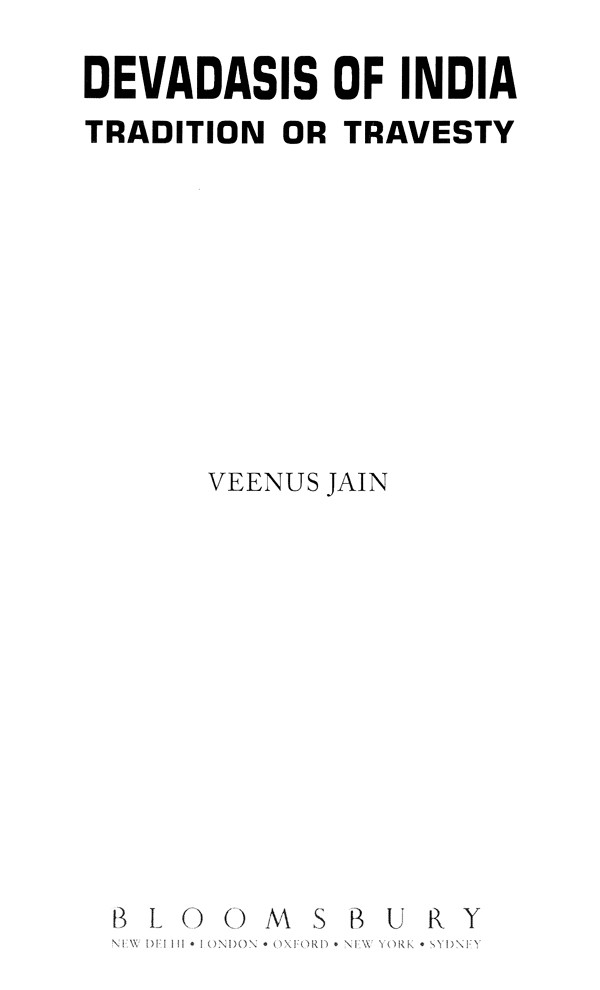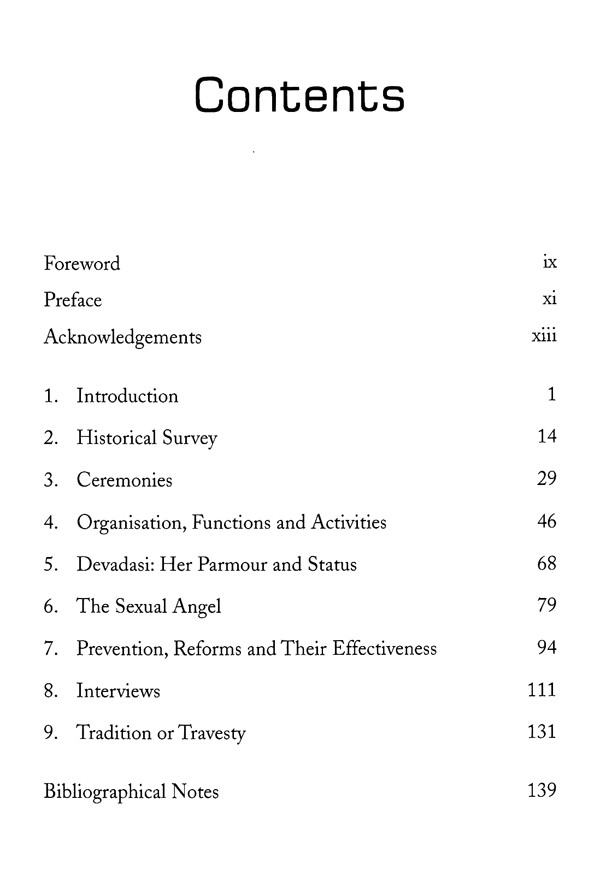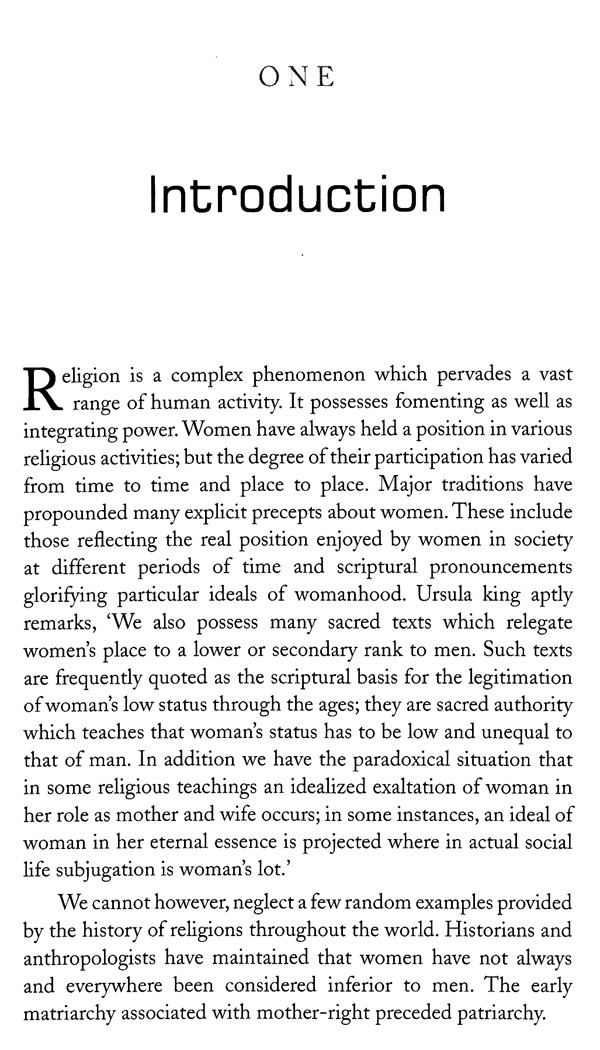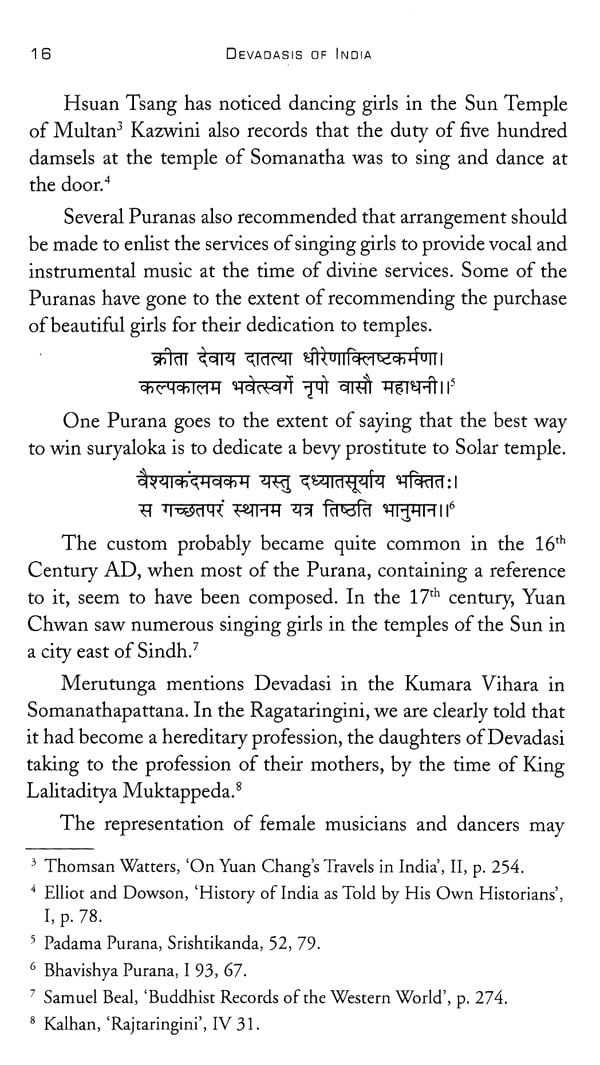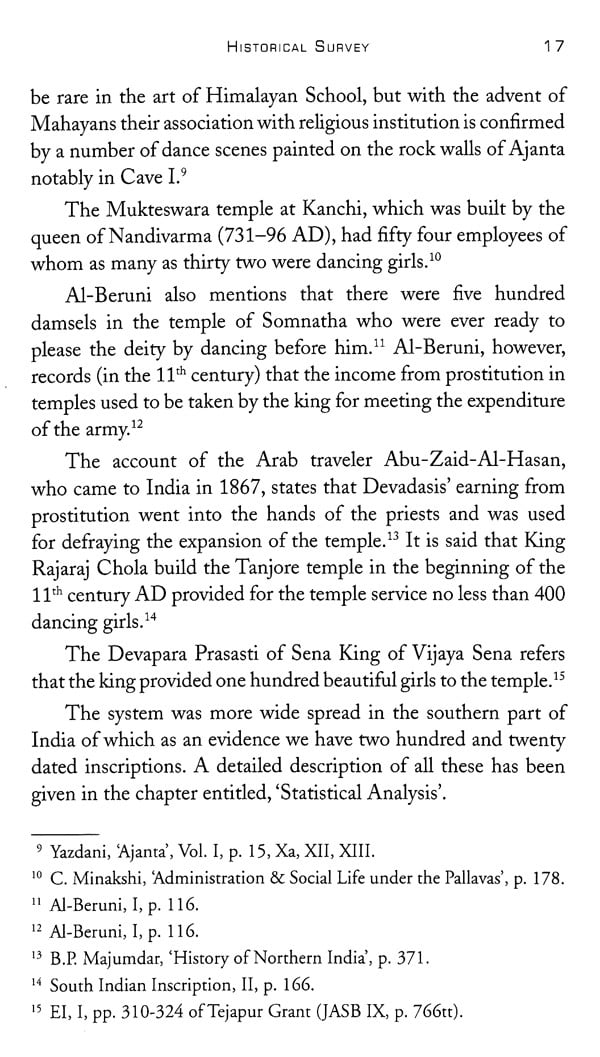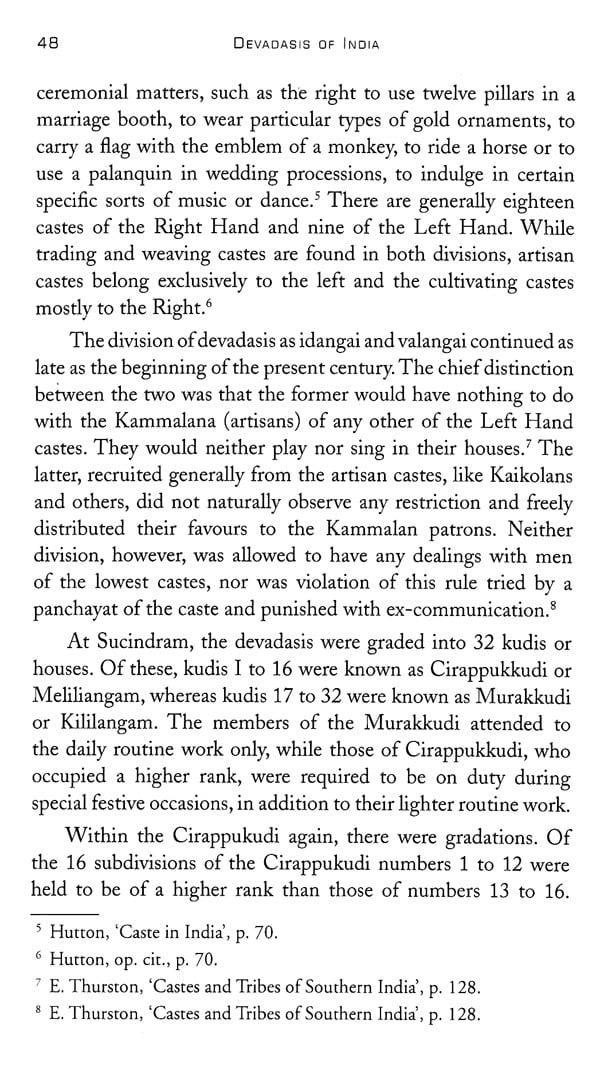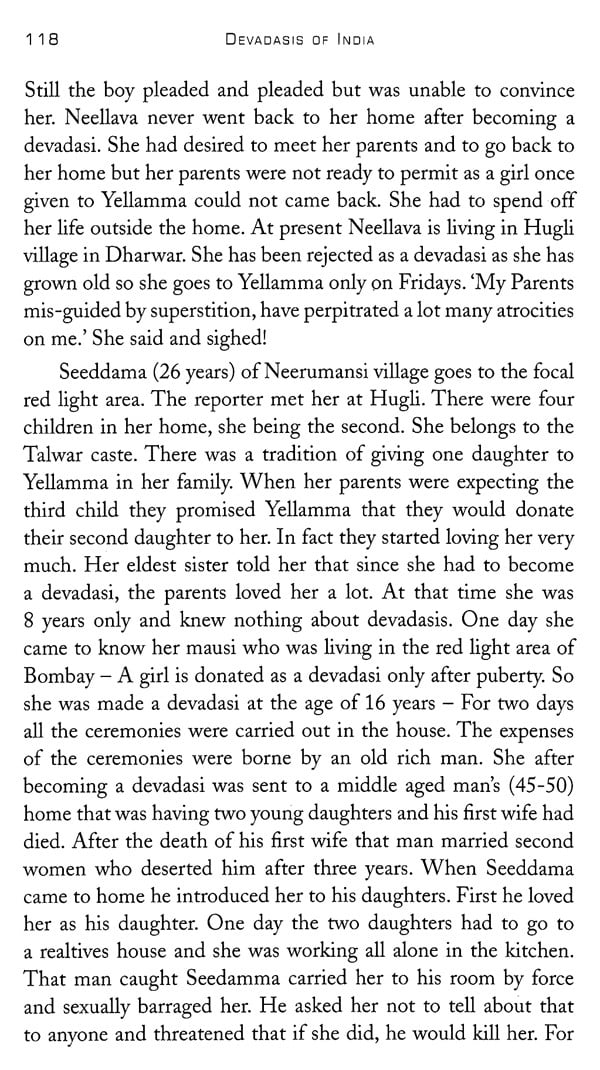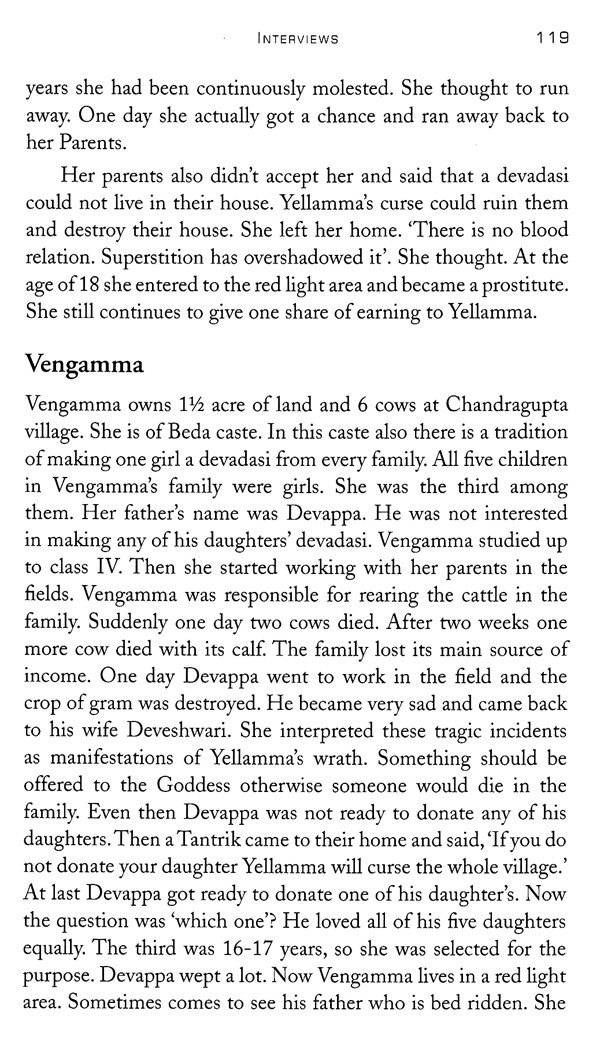
Devadasis of India: Tradition or Travesty
Book Specification
| Item Code: | UBF205 |
| Author: | Veenus jain |
| Publisher: | Bloomsbury Publishing India Pvt. Ltd |
| Language: | English |
| Edition: | 2019 |
| ISBN: | 9789388630757 |
| Pages: | 160 (Throughout B/w Illustrations) |
| Cover: | HARDCOVER |
| Other Details | 9.00 X 6.00 inch |
| Weight | 340 gm |
Book Description
Ancient India has been a land of wisdom, riches and mysteries. Its fabled saints, philosophers, ascetics, its multiplicity of Gods & religions, complex rituals and even snake charmers and magicians never ceased to fascinate the world. Socio-religious tradition of Devadasis or the 'Brides of God' as they were known in India, is one such tradition, shrouded in mystery that attracts attention. It compels a curious mind to take a closer look to learn more and understand its realities. These women are generally referred to by the term Devadasi which literally means 'female servant of the deity.This work bears on many topics such as origin, belief, development, ceremonies, organization, functions, activities, paramours, sexuality, historical survey, statistical analysis, preventive measures and the pathetic stories of Devadasis. Because it was conceived as a study of women, culture and religion, it must be borne in mind that all these concerns are dealt with as they arise out of a close attention to the practices of the Devadasis.
Veenus Jain is a historian, has earned her doctorate for her thesis entitled 'System of Devadasis in India'. She commenced her career with the Galaxy Education System Rajkot and was soon elevated to be the Principal, Human Resources Manager and Director (Education), of Global Indian International School, Gandhidham (Gujarat). Prof. Veenus joined Amity University as Junior Vice-President and is currently Professor and General Manager at Amity Institute of Social Sciences Amity University, Noida, Uttar Pradesh. She is also the editorial member of many referred and indexed international and national journals. She has been felicitated with Gold Medal for her M.A. Ancient History and M.Phil degrees, President Award by the President of India, Outstanding Educator and Scholar Award and Distinguished Woman Educator and Scholar Award.
In order to evaluate the kind of knowledge offered in these pages it is necessary to reflect on the simple question - Why did I choose to work on the system of devadasis in India? To answer this question I will have to go back in the memory lane: When I was in Srinagar (Kashmir) in the National Integration Camp - I became aware of the Indian Cultural Heritage and especially of the part played by women. Every day was celebrated as a state day as Assam Day, Bihar Day, Haryana Day and so on. In these celebrations the culture of one particular state was depicted which revealed to me the great role women play in religion and culture. At that time I was quite young studying in class IX, but there and then I decided to devote myself to women's study. This inclination towards the role played by women in religion and culture led me to make an in-depth study revolving around women, religion and culture.
When I discussed my interest with Dr. Madhu Gupta (Head of the Department. of History, S.D. College, Muzaffar Nagar, U.P.), she suggested to study the age-old institution of Devadasis.
This work began as a study of the dancers attached to the temples. These women are generally referred to by the term devadasi which literally means 'female servant of the deity'. This work bears on many topics such as origin, belief, development, ceremonies, organisation, functions, activities, paramours, sexuality, historical survey, statistical analysis, preventive measures and the pathetic stories of devadasis. Because it was conceived as a study of women, culture and religion, it must be borne in mind that all these concerns are dealt with as they arise out of a close attention to the practices of the devadasis.
The book Devadasis of India - Tradition or Travesty is a study of the Devadasis from the historical perspective.
The tradition of Devadasis has been discussed in various research works but yet many of its aspects are still a puzzle to the scholars. One such aspect is the origin of the system. Some scholars go back to the Jogimara Cave inscription of 3rd Century. B.C. and opine hastily that Sutanuka was a devadasi since she is referred to by this name. The famous scholar K.P. Jayaswal disagreed with this interpretation on the basis of language and context and interprets the word Devadasi as a 'servant of the monastery'. She could be a dasi in the service of a religious institution and not a devadasi in the later sense which had become a social tradition in which the woman was supposed to dedicate her services to the deity and was denied marriage since she was supposed to be married to the God. This is the reason why Kautilya mentions all the rules in connection with prostitutes but does not use the word devadasi.
Similarly when Kalidasa refers to dancing girls present in the Mahakala Temple of Ujjayeni at the time of evening worship (Meghaduta 1.35) it simply meant that the service of singing and dancing girls or prostitutes was utilized in the dance ritual since the practice of performing song and dance before the deity was common from very early times. The early Puranas do not mention this.
Religion is a complex phenomenon which pervades a vast range of human activity. It possesses fomenting as well as integrating power. Women have always held a position in various religious activities; but the degree of their participation has varied from time to time and place to place. Major traditions have propounded many explicit precepts about women. These include those reflecting the real position enjoyed by women in society at different periods of time and scriptural pronouncements glorifying particular ideals of womanhood. Ursula king aptly remarks, 'We also possess many sacred texts which relegate women's place to a lower or secondary rank to men. Such texts are frequently quoted as the scriptural basis for the legitimation of woman's low status through the ages; they are sacred authority which teaches that woman's status has to be low and unequal to that of man. In addition we have the paradoxical situation that in some religious teachings an idealized exaltation of woman in her role as mother and wife occurs; in some instances, an ideal of woman in her eternal essence is projected where in actual social life subjugation is woman's lot."'
We cannot however, neglect a few random examples provided by the history of religions throughout the world. Historians and anthropologists have maintained that women have not always and everywhere been considered inferior to men. The early matriarchy associated with mother-right preceded patriarchy.
**Contents and Sample Pages**
